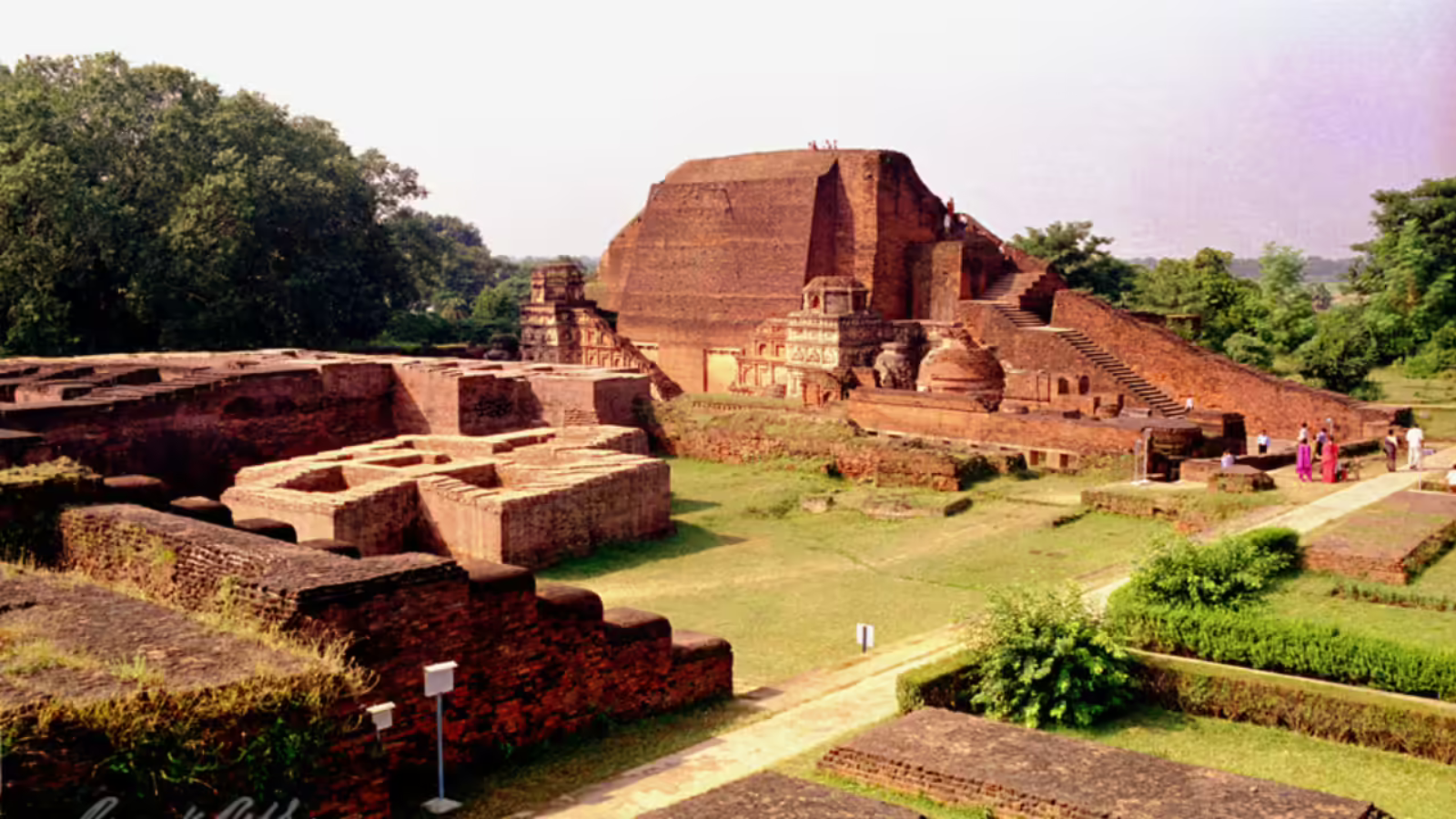Did You Know The First Residential University In The World Was In Bihar?
Bihar has long been a cradle of learning, but few know that it is home to the world’s first residential university . Long before Oxford, Cambridge, or Harvard existed, Nalanda University in Bihar was a place where students lived and studied together, creating a vibrant intellectual community. Its legacy continues to influence education globally even today.
Nalanda attracted scholars from across Asia, including China, Japan, Korea, and Tibet. It was not just a university but an international hub for knowledge exchange, covering diverse subjects such as astronomy, mathematics, philosophy, and medicine. The ruins of Nalanda still stand as a testament to India’s ancient educational brilliance and global impact.
Nalanda: The First Residential University in History
Founded during the Gupta Empire in the 5th century CE near Rajgir, Nalanda University was a fully residential campus housing approximately 10,000 students and 2,000 teachers. Its residential nature made it the first of its kind in the world, fostering a holistic educational environment where learning extended beyond classrooms into daily life.
Centres of Knowledge and Learning
Nalanda offered a wide range of subjects:
Its library, Dharmaganja, contained over 9 million manuscripts, making it one of the largest collections in the ancient world. Chinese scholars like Xuanzang and Yijing documented the university’s excellence, spreading its fame internationally.
Architecture and Campus Life
The Nalanda campus featured large red-brick structures, classrooms, meditation halls, gardens, and residential quarters for students. Its architectural sophistication influenced the design of many later universities. Students followed strict daily routines that combined study, meditation, and discussions, creating a disciplined yet vibrant learning environment.
Destruction and Revival
Nalanda thrived for nearly 700 years before being destroyed in the 12th century by Muhammad Bakhtiyar Khilji, whose army looted the university and burned its invaluable manuscripts. Modern Nalanda University was re-established in 2010 near the original site, reviving its tradition of global education.
The modern campus, inaugurated by Prime Minister Narendra Modi in 2024, is a “net-zero” green campus featuring advanced facilities and a focus on environmental sustainability.
Quick Facts About Nalanda University

Nalanda attracted scholars from across Asia, including China, Japan, Korea, and Tibet. It was not just a university but an international hub for knowledge exchange, covering diverse subjects such as astronomy, mathematics, philosophy, and medicine. The ruins of Nalanda still stand as a testament to India’s ancient educational brilliance and global impact.
Nalanda: The First Residential University in History
Founded during the Gupta Empire in the 5th century CE near Rajgir, Nalanda University was a fully residential campus housing approximately 10,000 students and 2,000 teachers. Its residential nature made it the first of its kind in the world, fostering a holistic educational environment where learning extended beyond classrooms into daily life.
You may also like
- UK beaches under threat! Deadly Portuguese Man O' War with jellyfish-like appearance appear along the coast; tips to stay safe
- Banks cannot charge interest on money recovered, says Vijay Mallya to High Court
- Trinamool MLAs lodge complaints against threat from people posing as CBI, ED officials
- What keeps Rashmika Mandanna energetic through the day? Actress shares her two habits
- Akshay Kumar remembers 'Queen Katrina' as he recreates 'Ek Uncha Lamba Kad' with Disha Patani in 'Welcome to the Jungle'
Centres of Knowledge and Learning
Nalanda offered a wide range of subjects:
- Mathematics and Astronomy
- Medicine and Logic
- Philosophy and Grammar
- Buddhist Studies and Scriptures
Its library, Dharmaganja, contained over 9 million manuscripts, making it one of the largest collections in the ancient world. Chinese scholars like Xuanzang and Yijing documented the university’s excellence, spreading its fame internationally.
Architecture and Campus Life
The Nalanda campus featured large red-brick structures, classrooms, meditation halls, gardens, and residential quarters for students. Its architectural sophistication influenced the design of many later universities. Students followed strict daily routines that combined study, meditation, and discussions, creating a disciplined yet vibrant learning environment.
Destruction and Revival
Nalanda thrived for nearly 700 years before being destroyed in the 12th century by Muhammad Bakhtiyar Khilji, whose army looted the university and burned its invaluable manuscripts. Modern Nalanda University was re-established in 2010 near the original site, reviving its tradition of global education.
The modern campus, inaugurated by Prime Minister Narendra Modi in 2024, is a “net-zero” green campus featuring advanced facilities and a focus on environmental sustainability.
Quick Facts About Nalanda University
- Ancient Origins: Founded during the Gupta Empire in the 5th century CE.
- Global Attention: Attracted students from China, Korea, Japan, Tibet, Mongolia, Sri Lanka, and Southeast Asia.
- Residential University: Housed over 10,000 students and 2,000 faculty members.
- Diverse Curriculum: Included Buddhist studies, philosophy, medicine, mathematics, astronomy, and literature.
- Massive Library: Dharmaganja housed over 9 million manuscripts.
- Destruction and Revival: Destroyed in the 12th century by Bakhtiyar Khilji; modern university re-established in 2010.
- Modern Campus: Net-zero green campus with cutting-edge facilities, inaugurated in 2024.









